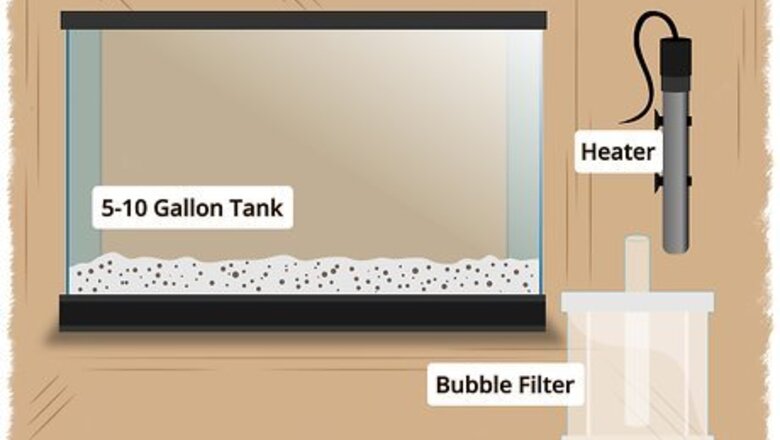
views
Set up your tank.
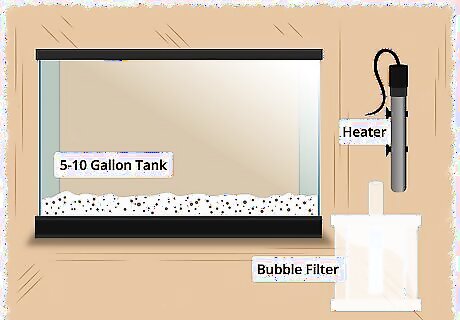
You will need a 5 to 10 gallon or 20 to 40 litre tank for your shrimp. You'll also need a heater (to keep temperature at 75F-80F or 24-27C during cool nights), gravel (dark will stress the shrimps less), and a bubble filter that is cycled. To cycle a bubble filter in a new tank, put the new bubble filter in an old tank, turn it on, and wait for 4 weeks. RCS will not survive the cycling process and will die from high levels of ammonia or nitrites. Do not use a power filter unless the whole intake is covered with pantyhose (or something with similar very small holes) and secured with a zip tie (otherwise shrimp may get sucked into the filter and pureed).
Buy a master test kit.
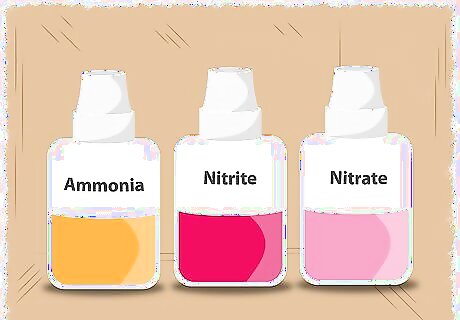
This is absolutely required for keeping shrimp. It is impossible to determine the problem with a tank without a master test kit. You will need the following tests: ammonia, nitrite, nitrate. Get drop tests, not test strips. Test strips are expensive, and expire after about 6 months of being open. Drop kits are much cheaper per test and last longer.
Purchase 5-10 red cherry shrimp.
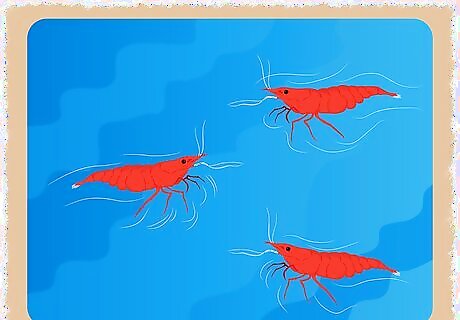
RCS cost $1.50 - $3 (US) each at a pet store. They cost much less per shrimp via online on websites and forums, many people also offer free shipping like $20 or so for 20 or so shrimp, it is easy to get a good deal these days. Try to get a mix of clear (males can have some red as well) males and red females. If you get 10 shrimp, your chance of getting both males and females is pretty much guaranteed. If someone wants to ship with a method that takes longer than 3 days, ask for pictures about how the shrimp are packaged, Cherry shrimp are VERY hard to kill and will most likely have no problem with a week in transit. Take into consideration the weather over the distance it will be shipped, ask for heat packs or ice packs in the shipping container to help counter ambient temperatures if that is a potential problem. Also request breather bags. Do not buy RCS (or any fish or shrimp) that the pet store received in the last 3 or 4 days. Any deaths from the stress of shipping tend to occur during the 3-4 days after putting them in the store tanks, so buy after this period. Buy only shrimp that have been in the store tanks at least 4 days. It is normal and desirable for the shipping bag containing shrimp to be filled with 1/3 to 1/2 water. This maximizes the trapped oxygen in the bag during shipping. This only applies loosely to the bags that are just normal plastic. If shipping with these bags, see if seller can use pure oxygen opposed to just air.
Fill your tank with water that you have added dechlorinator to.
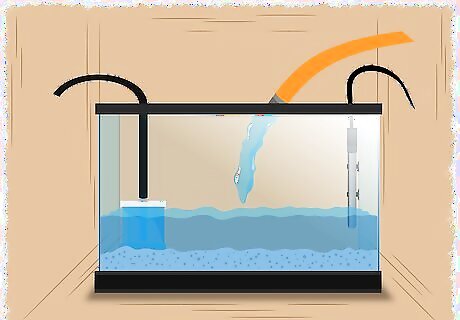
Chlorine and chloramines will kill shrimp. So, make sure you get a dechlorinator that neutralizes both.
Get the shrimp used to the water using these steps.
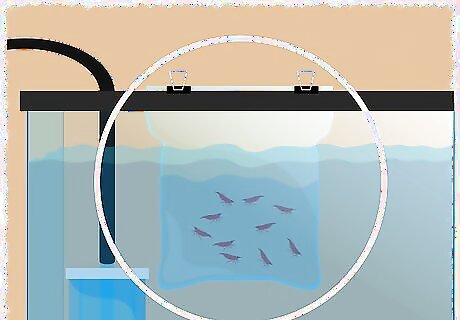
Put the bag into the water and clip it to the tank side using a binder clip. Add 1/4 cup tank water to the bag (perhaps use 1 turkey baster full of water). Wait 15 minutes. Repeat 2 more times. (An alternative to this is to test the bag's water parameters and your tank's if it is similar, just acclimate them to the temperature and dump them into the tank, cherries are very hardy and hard to kill relative to other shrimp.)
Dump the shrimp in the tank.

The temperature and water parameters (like pH) should have equalized enough not to shock the shrimp.
Set your heater to about 80 °F (27 °C).

Use another thermometer to verify your heater is working accurately. Check it daily when you feed them.
Feed the shrimp.
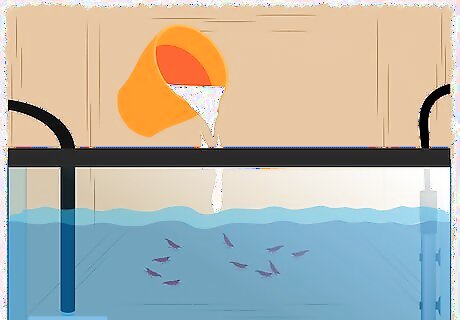
Good options include flake food, sinking pellets, or blanched squash or zucchini. Shrimp eat anything a fish would. You do not even need small pieces of food as they will rip off a piece of flake and feed it to themselves. Some shrimp do not like algae tablets, some do. (Foods with copper compounds are not ok for RCS.) If there is still food in the tank when you feed them, skip that feeding and check again later. Feed very small amounts once per day, especially if you just start with 10 shrimp. A flake the size of your pinky fingernail should last 10 RCS about 2, perhaps 3 days. Do not overfeed as it will result in harmless worms like detritus or planaria. If this happens do a water change and if you have no RCS babies then do a gravel vac and start to feed less food or not as often. To blanch zucchini, put one slice in a microwave safe bowl. Cover with about an inch or so or 3cm of water. Cook on high for 1 minute. Let cool for 20 minutes, then drop into tank. If the zucchini floats, weight it down with a zip tie, a piece of plastic, or a marble, but not metal.
Wait for the shrimp to breed.

If water temperature is warm enough and there is enough food, they will simply breed. Female shrimp should get greenish or yellowish eggs under their tail within 30 days of you receiving them, if they don't already have eggs. Female shrimp get a yellowish "saddle-shaped" patch behind their head. These are eggs in their ovaries. The eggs should move to their tails in 7-10 days. Once the eggs are under their tails, the eggs will hatch in 3-4 weeks. You will notice how the mom fans the eggs occasionally to prevent fungus from growing on them. The eggs will hatch faster if the water is warmer. You may wake up one day to find tiny clear shrimp on the plants, or on the bottom. Baby RCS look just like the adults, but they are very small, about 2mm long, and clear. But their shape is the same as an adult RCS. Shrimp will not eat their babies unless they are starving. Besides, the babies are quick to get away.
Maintain the tank.
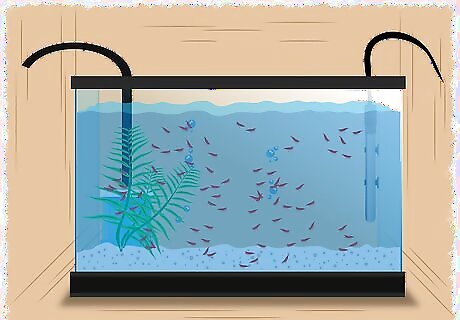
A 10-gallon or 40 litre tank can safely hold 100-150 adult RCS. Just make sure that you change 25% of the water each week without exception. Do not vacuum the bottom of the tank, baby shrimp get a lot of their daily food out of the "waste". However too much waste will cause a buildup of nitrates. High nitrates can kill shrimp.










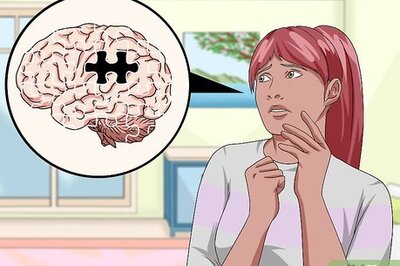

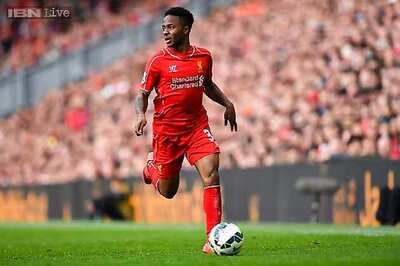



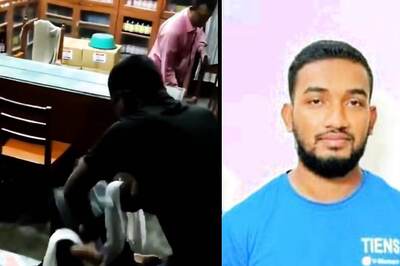

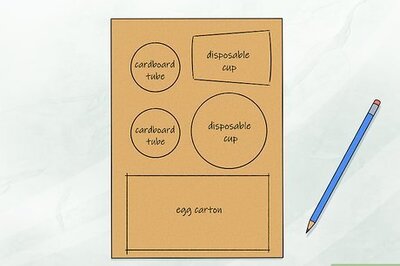

Comments
0 comment